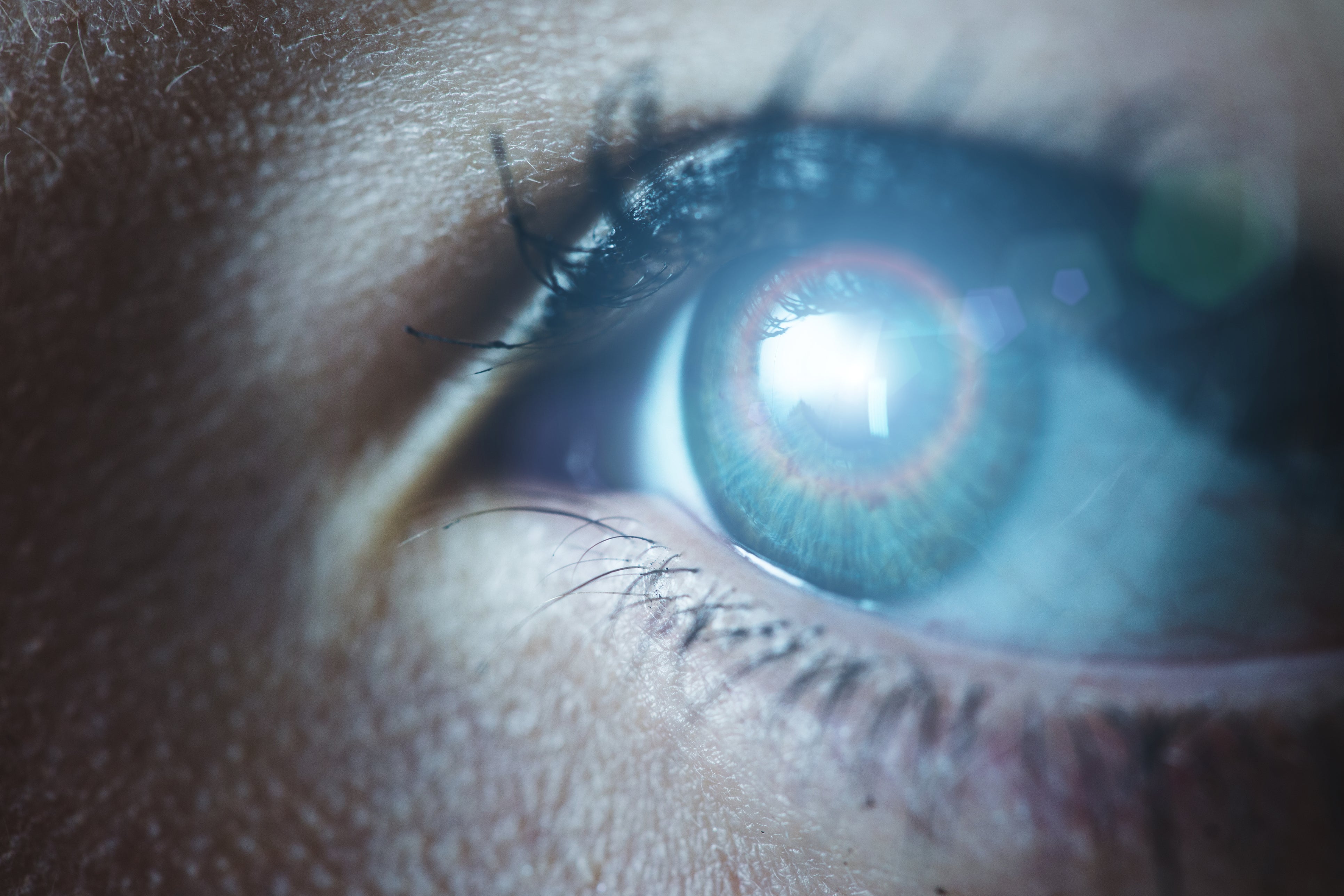Is there such a thing as a bionic eye, and what is synaesthesia?
We explore some of the curious questions that science can answer

Is there such a thing as a bionic eye?
People may be blind from birth or become partially sighted through disease or accidents. For those born blind, an artificial eye may not be all that useful because their visual cortex has not been trained to see. For those who have lost their vision later on in life, a bionic eye (an implant that replaces damaged retinal cells) may restore some of their sight.
Retinal implants are constructed from 25 electrodes just a thousandth of a millimetre thick and incorporate a miniature solar panel. When the panels absorb light, tiny currents are generated in the implants that then stimulate the ganglion cells beneath, bypassing damaged retinal cells.
So far, the implants have worked in animals and in one human volunteer who had gone blind through glaucoma.
The patient could see a light shone in the eye and make out simple letters. If more electrodes are used, the wearer’s vision might be even better. Next, the researchers will need to make an implant that does not corrode in the salty solutions of the eye and will not slice into the retina (the implants are razor-sharp because they are so thin). Researchers remain hopeful that eventually such implants may restore sight to some blind people.
Why do your eyebrows grow as you get older?
The continued growth of hair in men is thought to be due to sex hormones (androgens). Hair in different parts of the body varies in its sensitivity to androgens, and eyebrows, noses, ears and patches on the top of the shoulders respond to continual high levels of the hormones. It, therefore, does not usually appear in women, who have lower levels of androgens.
Why evolution should have produced them is unclear. There is, however, a hint from some species that females seek out older males because that shows they are good at surviving and so must have a fit set of genes. The males of these species develop outward signs of their age. Perhaps going grey and sprouting ear and nose hairs was once attractive to women, so men showing them successfully got their genes into the next generation.
How does the brain work?
The brain is far more complex than even the biggest supercomputers, and we still don’t know a lot about it. An average brain weighs 3lb and contains about 100 billion nerve cells – about the same number as there are stars in the Milky Way. Each nerve cell has between 1,000 and 10,000 connections with other nerve cells, which are mediated by special chemicals. The number and pattern of connections in use at any one time depends on what we are doing. After the age of 20, our brains lose about 0.03 ounces in weight a year because nerve cells die and are not replaced. Luckily, some nerve cells duplicate tasks – so we don’t lose function at once.
Are some people more likely to get addicted to drugs than others?
Many people use potentially addictive substances regularly without becoming addicted (for example, the social drinking of alcohol), but others find themselves dependent on their use. There may be additional reasons for the overuse of drugs, such as depression, and social or family environment may influence whether or not use develops into addiction.
Our genes may also have something to do with it, but research in this area is still at a very early stage. Almost certainly, there is no single addiction gene.
What is synaesthesia?
It is an unusual condition in which the senses get cross-wired. A person with synaesthesia may see colours when they hear a sound or taste words. Stimulation of one sense, it seems, causes an inappropriate stimulation of another.
The most common form of synaesthesia is seeing or hearing words in colour. The condition affects about one in 25,000 people and is more common in women than in men. And more people with it are left-handed than the population average, but the significance of this is unclear.
No one really knows what goes on in the synaesthetic brain. One theory is that the region of the brain normally receiving input from the ears also gets some information from the eyes. Brain imaging shows that areas of the cortex that normally receive information from the eyes are also activated when the person hears a sound. This would suggest that there is some cross-wiring in the brain.
But other researchers argue that this is too simplistic and that people with synaesthesia have an unusual limbic system (the centre of emotion in the brain). They suggest that the limbic system pulls together fragments of memories from all over the brain and pastes them together to produce a complete memory.
Normally we are not conscious of this process, but perhaps people with synaesthesia are. This may explain why inappropriate sensory data pops up in their mind.
People who have synaesthesia do not think of their unusual ability as a handicap. Most are sorry that the rest of us live in such a colourless world.






Join our commenting forum
Join thought-provoking conversations, follow other Independent readers and see their replies
Comments